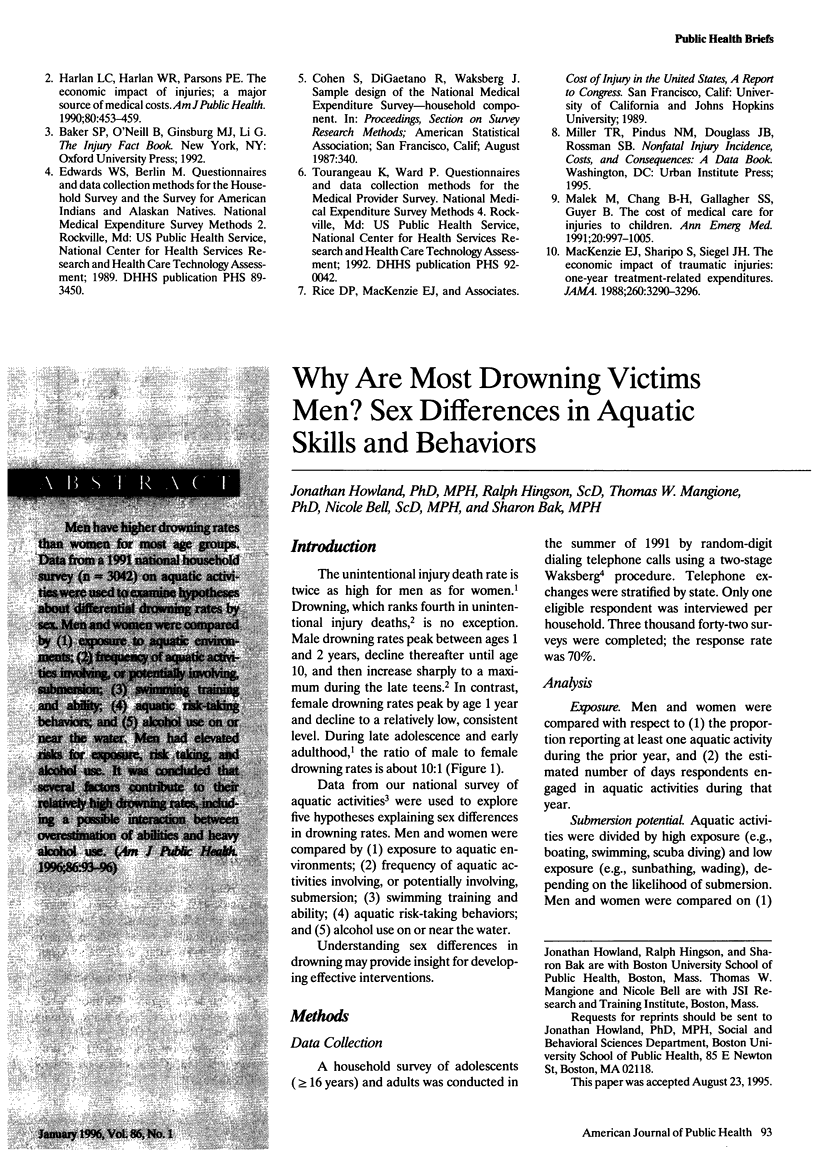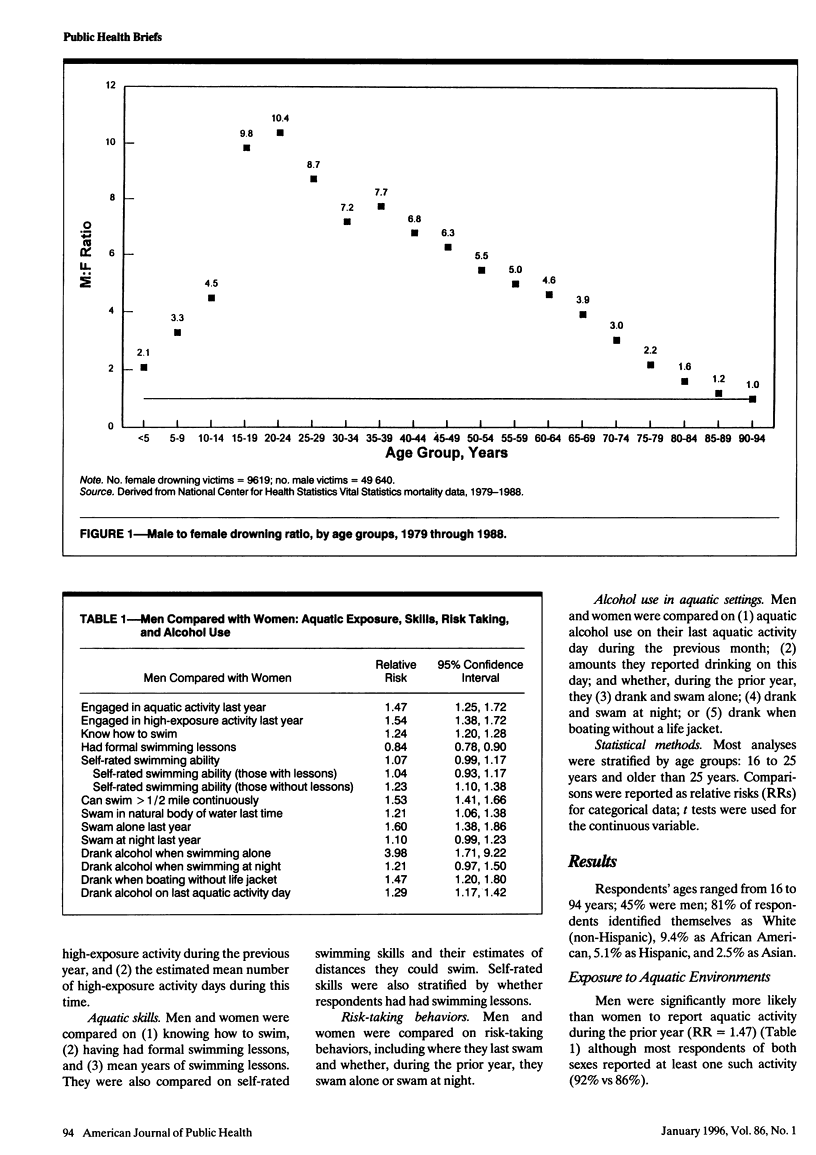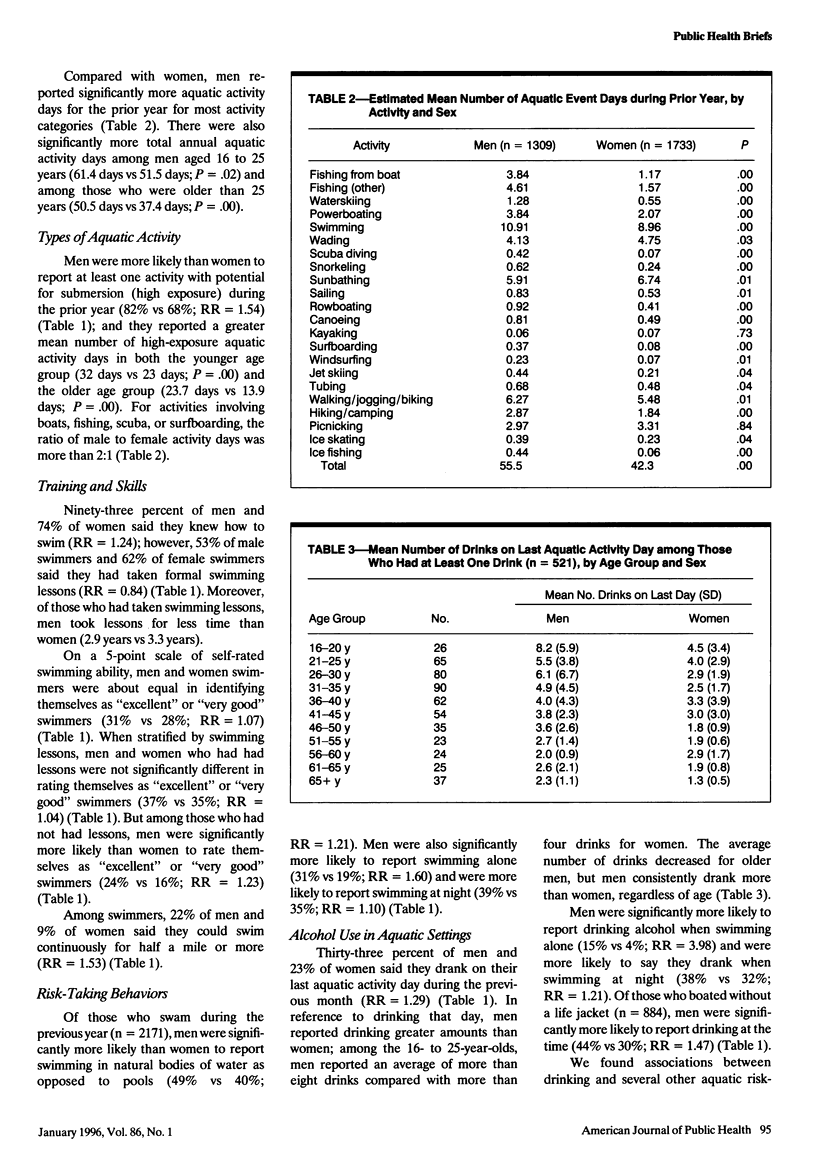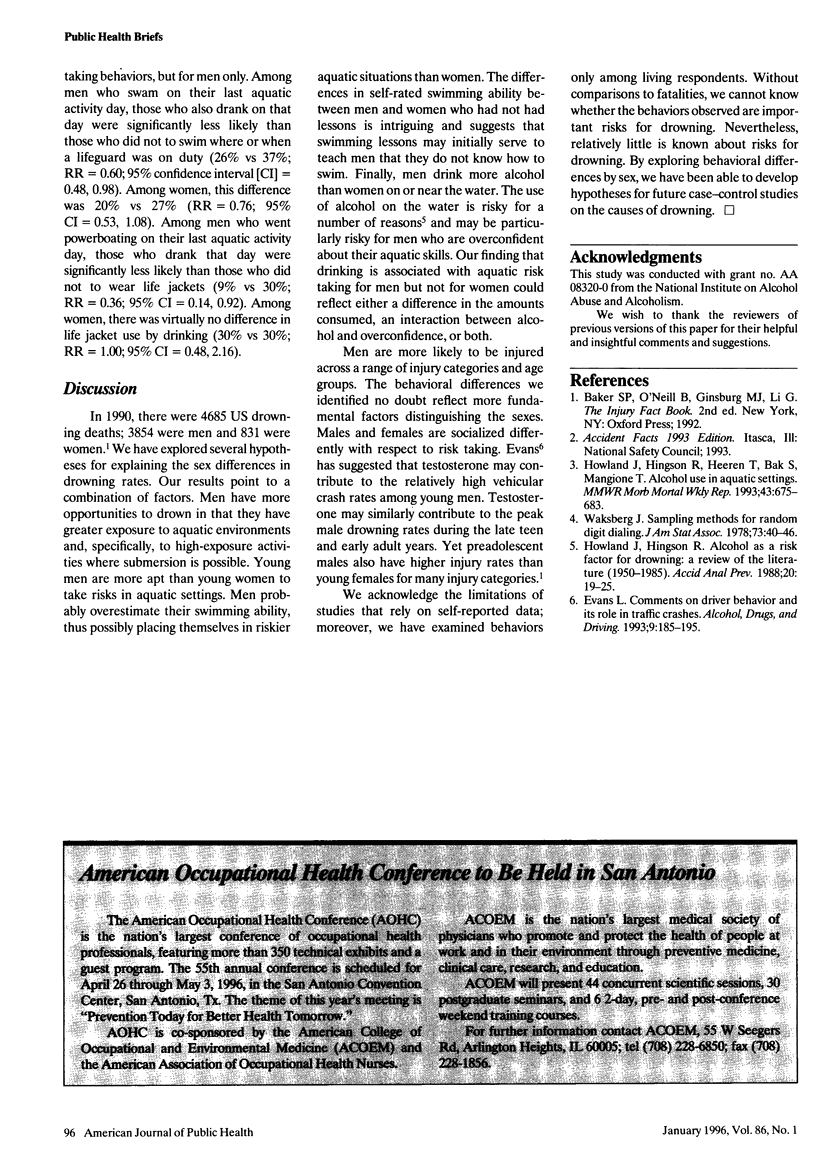Abstract
Men have higher drowning rates than women for most age groups. Data from a 1991 national household survey (n = 3042) on aquatic activities were used to examine hypotheses about differential drowning rates by sex. Men and women were compared by (1) exposure to aquatic environments; (2) frequency of aquatic activities involving or potentially involving, submersion; (3) swimming training and ability; (4) aquatic risk-taking behaviors; and (5) alcohol use on or near the water. Men had elevated risks for exposure, risk taking, and alcohol use. It was concluded that several factors contribute to their relatively high drowning rates, including a possible interaction between overestimation of abilities and heavy alcohol use.
Full text
PDF



Selected References
These references are in PubMed. This may not be the complete list of references from this article.
- Howland J., Hingson R. Alcohol as a risk factor for drownings: a review of the literature (1950-1985). Accid Anal Prev. 1988 Feb;20(1):19–25. doi: 10.1016/0001-4575(88)90011-5. [DOI] [PubMed] [Google Scholar]


